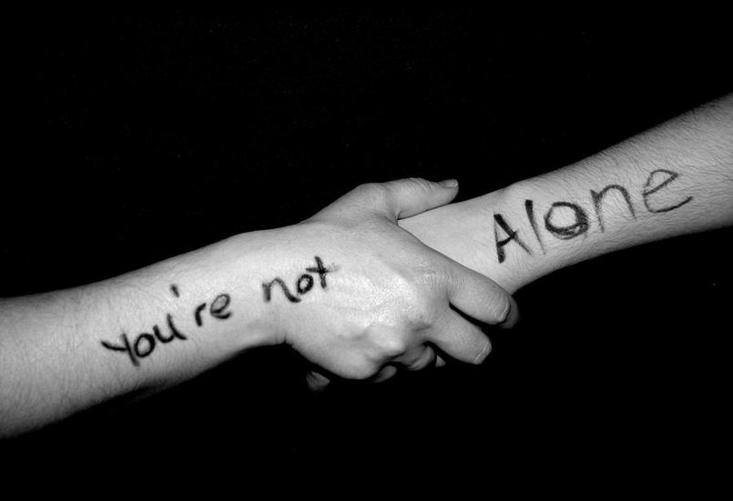A generation in crisis: Suicide is the second leading cause of death among teens
Depression in young adults is the focus of World Mental Health Day today. Find our where you can get help

UP to 20% of South African high school learners have tried to take their own lives at some point, and 9% of young adult deaths are labelled as suicide.
The mental state of the world’s youngsters is of concern to the World Health Organisation (WHO), who reported that depression is the third highest disease burden among adolescents globally, while suicide is the second leading cause of death in the 15 to 29 age bracket.
In South Africa, the SA Depression and Anxiety Group (SADAG) says that 9% of teen deaths in the country are due to suicide.
These findings are in line with the 2011 Youth Risk Behaviour Survey (YRBS), which found that a quarter of grade 8-11 learners across all SA’s provinces had felt so sad or hopeless that they couldn’t engage in their usual daily activities for two weeks or more.
The same report stated that than one in six had either thought about suicide, made plans to commit suicide, or attempted it at least once in the past six months.

World Mental Health Day
Dr Sebolelo Seape, Chairperson of the Psychiatry Management Group (PsychMG), says that these statistics have seen the focus of World Mental Health Day (10 October) be highly focused on educating parents and guardians on the risks and warning signs of suicide and suicidal thoughts.
‘Prevention of teen suicides starts with a better understanding of the symptoms of depression,’ she said.
‘The causes of depression and related mental illnesses in teenagers and young adults are multi-faceted: There is the stressful nature of the teenage years – for some teenagers, the normal developmental changes of these years such as bodily changes, new patterns of thoughts and feelings, can be unsettling and overwhelming.
‘There are social changes as well, such as changing schools, the pressure of final exams, the prospect of leaving home to start tertiary studies or a job; as well as other stress factors such as family issues, changes in their friend networks, and the pressure to succeed.’
What to watch out for
Suicides rarely happen without warning, and learning – and recognising – these signals is the most effective way to prevent suicide.
Warning signs and symptoms of depression could include:
• Changes in eating and sleeping habits
• Loss of interest in usual activities
• Neglect of personal appearance or hygiene
• Withdrawal from friends and family, or running away from home
• Alcohol and substance abuse
• Unnecessary risk-taking behaviour
• An obsession with death and dying
‘I don’t care if I die’
Dr Seape also says that there are numerous factors linked to emotional distress, such as feelings of boredom, agitation, nervousness, sadness, loneliness or hopelessness.
‘Some teenagers may actually pass verbal hints by talking about death and dying directly or indirectly,’ she said.
‘They may talk about wanting to die and begin to dispose of much-loved possessions, and they may write a suicide note.
‘All threats of suicide must be taken seriously,” she warned.
Dr Seape said existing mental illness or substance abuse, and a family history of mental illness, suicide, substance abuse or violence, heightened the risk of suicide.
‘A previous attempt is the strongest predictor of another suicide attempt.’
Don’t try to change them
She says that parents, teachers and friends concerned about a teenager at risk of suicide should be willing to:
• Listen without judgement
• Provide reassurance that they care
• Objectively and calmly ask questions about their suicidal thoughts.
Never try to argue them out of suicide, and always avoid guilt-inducing statements such ‘suicide will hurt your family’, but rather:
• Let them know that you care
• Make it clear that you want to understand
• Reiterate that they are not alone
• Reassure them that the problems they are facing are temporary and can be handled together
• Repeatedly instill in them that depression can be treated, and that problems can be solved
• Lovingly suggest that they talk to an external party such as a teacher, doctor or counsellor, and offer to go with them for support
‘As soon as there are concerns of a suicide risk, the person should be taken immediately to a clinic or emergency room,’ she said.
Once the condition has been identified, continue to offer support and take an active role, for example by ensuring that they take prescribed medication or attend scheduled counselling sessions.
Where to get help
• SA Depression and Anxiety Group (SADAG): 011 2344837 (8am-8pm Mondays to Sundays); suicidal emergency line 0800 567 567; 24hr helpline 0800 121314.
Website: www.sadag.org
• LifeLine: Helpline (24hrs) 0861 322 322
Website: www.lifelinesa.co.za
• Use www.suicide.org for useful resources and contact groups in the various provinces.
HAVE YOUR SAY
Like our Facebook page and follow us on Twitter
For news straight to your phone invite us:
WhatsApp – 072 069 4169
Instagram – zululand_observer

